The MGA With An Attitude
CRANKCASE VENTILATION for the Twin Cam #5 - TC-335E
Here we get creative and add a PCV valve for Positive Crankcase Ventilation. It starts with the same two valve cover vents as shown on the previous page, as well as the same oil catch can (for racing applications). The catch can is now optional, as it may reduce the amount of oil fumes going into the engine air intake.
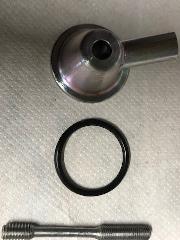
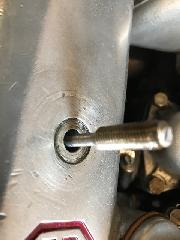
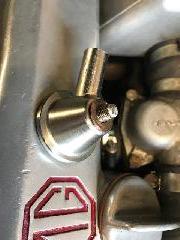
But now we remove the intake filter from top of the catch can, and install a PCV valve in its place. (Photos below compliments of Luc Van Helleputte via MGA Twin Cam Enthusiasts Group). The PCV valve shown comes from a Mitsubishi Lancer SNXM Part Nr 01130. It is a common "generic" PCV valve available from any auto parts store. Luc put this valve vertical in the oil catch can with a modified grommet that he made from a generic grommet D=5/8”. Do assure that the PCV valve checks flow in the correct direction from the catch can into the intake manifold.
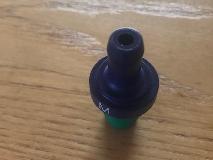
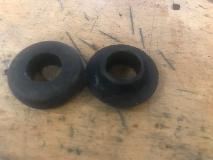

Run a hose from the PCV valve to a copper pipe (in this case 6-mm) that runs forward along top of the intake manifold, doing a 180 degree turn to connect to the front end of the intake manifold. Here you can drill and tap the replaceable core plug rather than modifying the intake manifold to add the vacuum port.
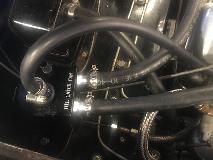
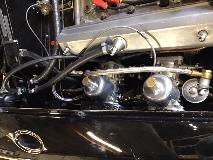

Finally it needs the small intake air filter to be connected with a 1/2" hose to the rear side cover in
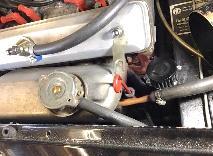 place of the original draft pipe. This was the breather that came with the oil separator catch can. Attach the filter to the front edge of the heater shelf, and add a small restrictor orifice, about 5/32-inch drill size, to limit intake air flow when dealing with the new low level vacuum created in the crankcase by the PCV valve.
place of the original draft pipe. This was the breather that came with the oil separator catch can. Attach the filter to the front edge of the heater shelf, and add a small restrictor orifice, about 5/32-inch drill size, to limit intake air flow when dealing with the new low level vacuum created in the crankcase by the PCV valve.
 This system will then draw a small amount of air through the crankcase with consistent low level vacuum, same crankcase vacuum under all conditions from idle to full throttle and on overrun. The PCV valve will adjust to accept any amount of blow-by while maintaining the regulated low level vacuum. Luc did a few tests, and the valve is slightly open at 800 rpm and fully open at 1500 rpm. This system will then draw a small amount of air through the crankcase with consistent low level vacuum, same crankcase vacuum under all conditions from idle to full throttle and on overrun. The PCV valve will adjust to accept any amount of blow-by while maintaining the regulated low level vacuum. Luc did a few tests, and the valve is slightly open at 800 rpm and fully open at 1500 rpm.
 This also begs for a change of fuel metering needles in the carburetors to provide a bit more fuel to mix with the small amount of vent air coming though the crankcase (especially at low engine speed). Blow-by gasses do not need additional fuel, as blow-by gas is inert with very little oxygen, so it doesn't screw up intake fuel/air ratio. That is more in the nature of Exhaust Gas Recirculation. This also begs for a change of fuel metering needles in the carburetors to provide a bit more fuel to mix with the small amount of vent air coming though the crankcase (especially at low engine speed). Blow-by gasses do not need additional fuel, as blow-by gas is inert with very little oxygen, so it doesn't screw up intake fuel/air ratio. That is more in the nature of Exhaust Gas Recirculation.
Parts used:
PCV valve Mitsubishi Lancer, Part Nr 01130, 30 euro
Oil catch reservoir breather tank, eBay US Nr 264578793281, $25.99 (23 euro)
Steel breathers on the valve covers, come from a Renault Alpine A110 1300 S. Paid for the 2 plus O-rings (find them by a old local dealer), 95 euro.
|